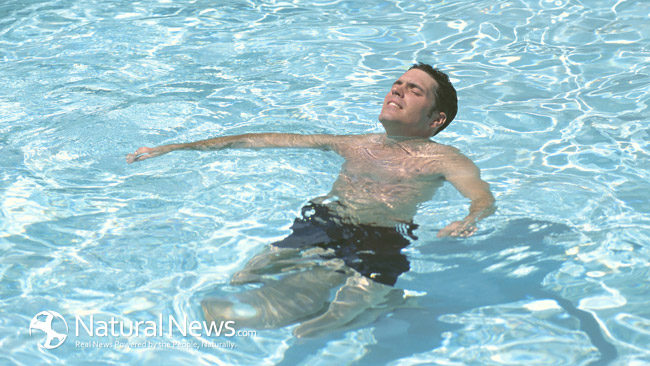Most swimming pools are maintained with chlorine. It is relatively inexpensive, and it disinfects pools, dissolves perspiration and body oils from swimmers, and impedes the growth of algae in the pool.
Symptoms of chlorine allergies
Chlorine usage is so prevalent in America that over the years many people have developed an allergy to it. There are several diverse symptoms of chlorine allergy:
- It may cause your eyes to water and your vision to blur.
- You can get a sensation of burning in your nose, throat or chest.
- It could cause shortness of breath, wheezing, coughing, or tightness in your chest.
- Vomiting and nausea is another potential symptom.
Chlorine allergies can show up when a person is exposed to the chlorine in drinking water, bath water, laundry products, or swimming pools.
How to maintain your swimming pool with chlorine alternatives or with much less chlorine
There are 4 ways to maintain your pool without the use of massive amounts of chlorine:
- Bromine
While it still has an odor, bromine is less of an irritant than chlorine, although it is in the same chemical family. Rather than leaving your pool water clear, it leaves the water a dull green color, so many people combine it with either chlorine or potassium peroxymonosulfate to clear up the water color. Using bromine in your pool will cost about twice as much as using chlorine in it.
- Ionizer
In ionization of your pool water, copper (which kills algae) and silver (which sanitizes) are charged and sent into the water. Since this process does not oxidize the perspiration and body oils, a small amount of chlorine is still needed to do this job. The pool pump must run continuously with this method, and there is a risk of the metals causing the hair and fingernails of the people using the pool to turn green.
- Ozonators
Ozone generators drastically reduce the amount of chlorine needed in a pool by 90%. They put ozone into the water that kills germs and cleans the water. The pool pump must run continuously with this method, and they work best in a dry climate.
- PHMB
This compound is polyhexamethylene biguanide, and to use it, the pool must contain non-chlorinated water. PHMB kills germs, but doesn’t oxidize sweat and body oils. Nor does it kill algae. Hydrogen peroxide is recommended for oxidizing. Swimmers in a pool treated with PHMB will have less hair damage and dry skin than those using chlorinated pools.
It is important to keep all chlorine out of a pool treated with PHMB as even a tiny amount left in a bathing suit from laundering it in chlorine products will cause a chemical reaction.
Conclusion
Your pool is a wonderful asset to your home. You may even have a beautifully designed pool with custom features, but perhaps you never considered the best and healthiest options to maintain it and never realized that there are alternatives to chlorine.
Pools are such fun that it is important to give thought to making them kinder and friendlier to the people who use them. And if some of those people have a chlorine allergy, it is imperative to find a way to let them enjoy swimming.





